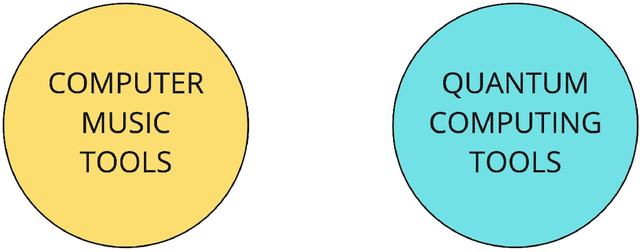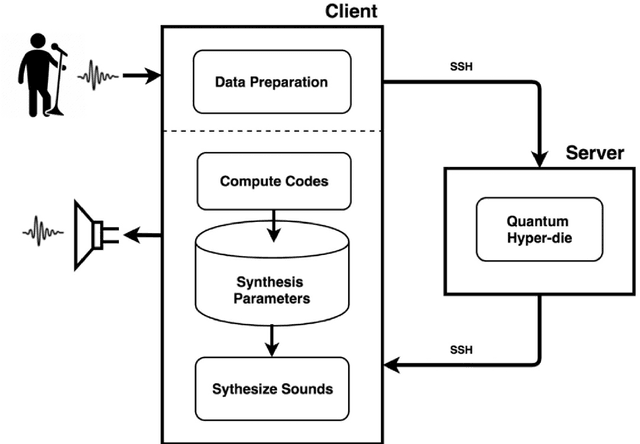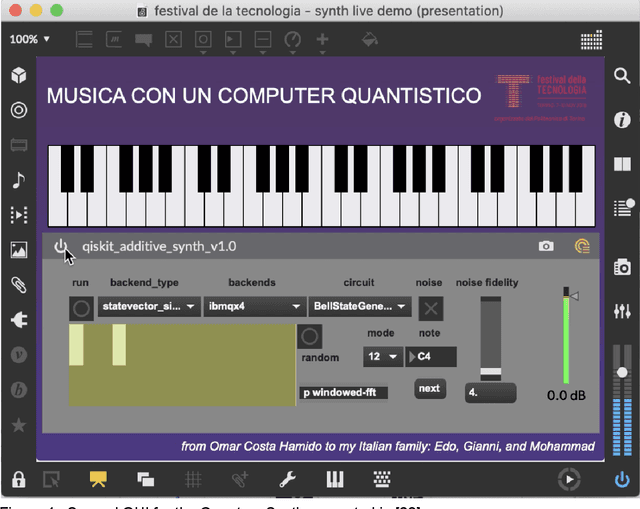Omar Costa Hamido
Techniques for Quantum-Computing-Aided Algorithmic Composition: Experiments in Rhythm, Timbre, Harmony, and Space
May 26, 2025Abstract:Quantum computing can be employed in computer-aided music composition to control various attributes of the music at different structural levels. This article describes the application of quantum simulation to model compositional decision making, the simulation of quantum particle tracking to produce noise-based timbres, the use of basis state vector rotation to cause changing probabilistic behaviors in granular harmonic textures, and the exploitation of quantum measurement error to cause noisy perturbations of spatial soundpaths. We describe the concepts fundamental to these techniques, we provide algorithms and software enacting them, and we provide examples demonstrating their implementation in computer-generated music.
Intro to Quantum Harmony: Chords in Superposition
Apr 19, 2024Abstract:Correlations between quantum theory and music theory - specifically between principles of quantum computing and musical harmony - can lead to new understandings and new methodologies for music theorists and composers. The quantum principle of superposition is shown to be closely related to different interpretations of musical meaning. Superposition is implemented directly in the authors' simulations of quantum computing, as applied in the decision-making processes of computer-generated music composition.
QAC: Quantum-computing Aided Composition
Feb 09, 2022



Abstract:In this chapter I will discuss the role of quantum computing in computer music and how it can be integrated to better serve the creative artists. I will start by considering different approaches in current computer music and quantum computing tools, as well as reviewing some previous attempts to integrate them. Then, I will reflect on the meaning of this integration and present what I coined as QAC (Quantum-computing Aided Composition) as well as an early attempt at realizing it. This chapter will also introduce The QAC Toolkit Max package, analyze its performance, and explore some examples of what it can offer to realtime creative practice. Lastly, I will present a real case scenario of QAC in the creative work Disklavier Prelude #3.
 Add to Chrome
Add to Chrome Add to Firefox
Add to Firefox Add to Edge
Add to Edge